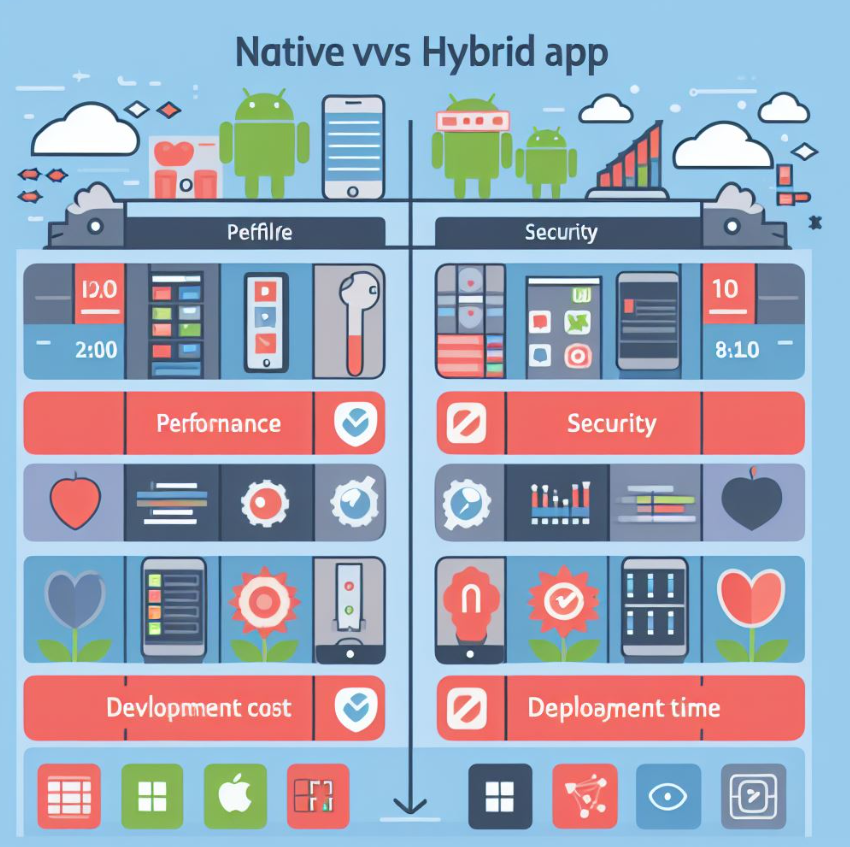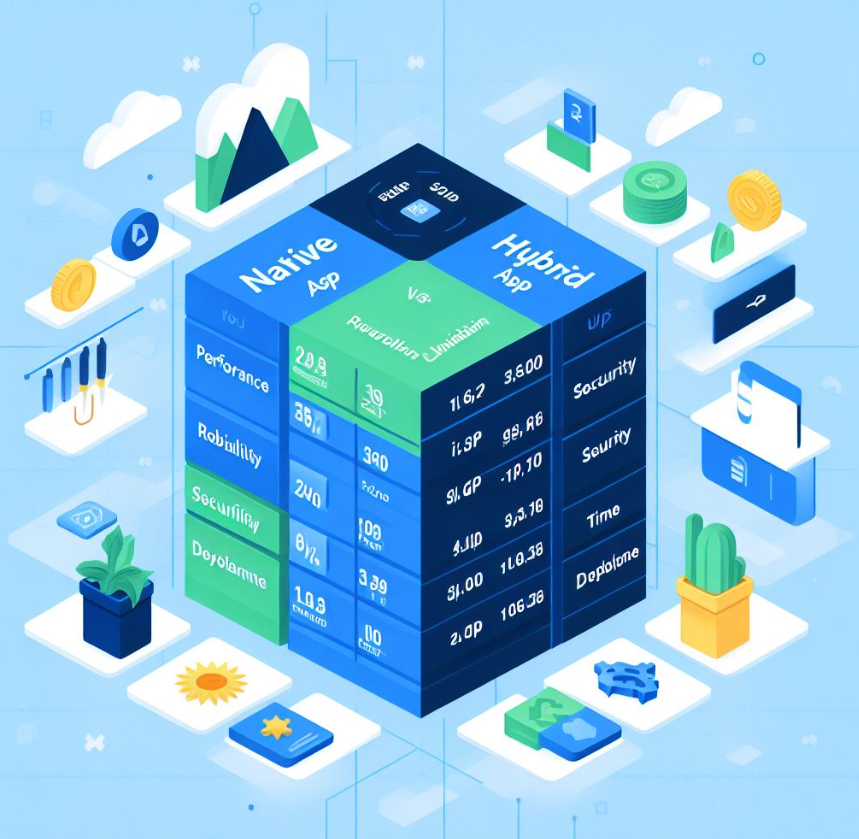
Native applications are tailored software programs designed for specific mobile operating systems. Developers use platform-specific tools and languages, such as Swift and Objective-C for iOS and Java or Kotlin for Android, to create these applications. This specialized approach enhances the apps’ performance and ensures a robust user experience by taking full advantage of the operating system’s features and the device’s hardware capabilities.
Optimized for their respective platform, native applications excel in speed and efficiency. The intimate integration with device hardware, like the GPS, camera, and microphone, allows these applications to operate seamlessly, providing experiences that are not only faster and more reliable but also more in sync with what users expect from their devices. Thanks to this, native applications can effortlessly interact with a phone’s various components and services, which translates to improved application performance and a more intuitive interface.
The integration with a device’s ecosystem extends to how native apps handle updates and utilize new system features. As operating systems evolve and introduce new capabilities, native applications can quickly incorporate these advancements, owing to their direct connection to the platform’s APIs. This enables the applications to stay current with technological progress and meet the growing demands of users for cutting-edge functionality.
The development of native applications does pose some logistical considerations. Since they are platform-specific, reaching users on different operating systems involves creating separate versions of the application for each one. This necessity increases both the development budget and the time to market. Maintaining these individual app versions also requires additional resources since updates, bug fixes, and new features must be rolled out to each application independently.
Despite these considerations, the advantages of native applications for delivering a superior user experience and leveraging the full potential of a device’s hardware often outweigh the complexities involved in their development and maintenance. Organizations and developers must assess their specific needs and resources to determine the best approach for their mobile application strategy.
The Hybrid App Model
The Hybrid App Model represents a strategy for mobile application development where applications are created using web technologies such as HTML5, CSS, and JavaScript, and are then housed within a native container. This container enables the app to leverage a mobile WebView to operate on a device, gaining access to hardware capabilities that are usually available to native apps.
Developers opting for the hybrid route benefit from the ability to write their application code once and seamlessly deploy it across multiple platforms. This uniformity not only accelerates the development process but can also lead to cost efficiencies, as it eliminates the need to craft separate codebases for Android and iOS systems. Consequently, this unified approach simplifies the task of app maintenance.
The ability for hybrid apps to engage with a device’s features is facilitated by plugins. These extend the app’s reach to utilize hardware and software extras that enhance functionality, albeit sometimes with less immediacy or smoothness than apps developed specifically for the platform. With the progression of mobile hardware and the enhancement of browser capabilities, the discrepancy in performance between hybrid and native apps has diminished, making hybrid apps more competitive. Nonetheless, for applications that demand high performance, such as sophisticated games or those requiring advanced graphics, the differences between hybrid and native performance may be determinative.
Hybrid apps provide a balanced solution for organizations looking to deploy apps across diverse platforms without the extensive investment of time and resources that native development demands. The evolution of device hardware, paired with improvements in browser technologies, indicates that the future for hybrid applications is optimistic, presenting a viable option for many app developers. Despite the nuances in performance, the hybrid model remains a popular and practical choice in mobile app development.
Deciding on the Right Path
Choosing the correct development approach for a mobile application is a strategic decision that hinges on a multitude of considerations. The factors to weigh include the level of user experience sought, the feature complexity, resource allocation, and the overall aim of the app.
When the application necessitates intricate animations, seamless responsiveness, and heavy usage of the device’s native capabilities, developers might favor native app development. Native apps are well-suited for high-performance games, sophisticated photo or video editing tools, and apps that handle sensitive transactions such as those in the finance sector. The primary advantage is their ability to maximally leverage the hardware and software capabilities of the mobile device, thus providing an unmatched level of finesse and operational security.
Hybrid apps are often more cost-effective and quicker to market, making them ideal for minimum viable products, market validation experiments, or when the need to launch across various platforms concurrently is critical. The technology behind hybrid apps allows for a single codebase to be used across multiple platforms, reducing development time and effort. They are particularly effective for content-centric applications, straightforward utilities, or those that require regular content updates in sync with a web service.

The long-term vision for the app, anticipated scalability, and the demographics of the intended audience are paramount when deciding on the app’s foundation. Hybrid and native approaches each offer unique benefits and are instrumental in the ecosystem of mobile applications. Critical examination of performance requirements against fiscal limitations and the development team’s expertise will aid in arriving at a choice that positions the mobile app for maximum effectiveness and user satisfaction. It is the alignment of these strategic considerations with the project’s objectives that plays a decisive role in the success of a mobile application’s development and deployment.